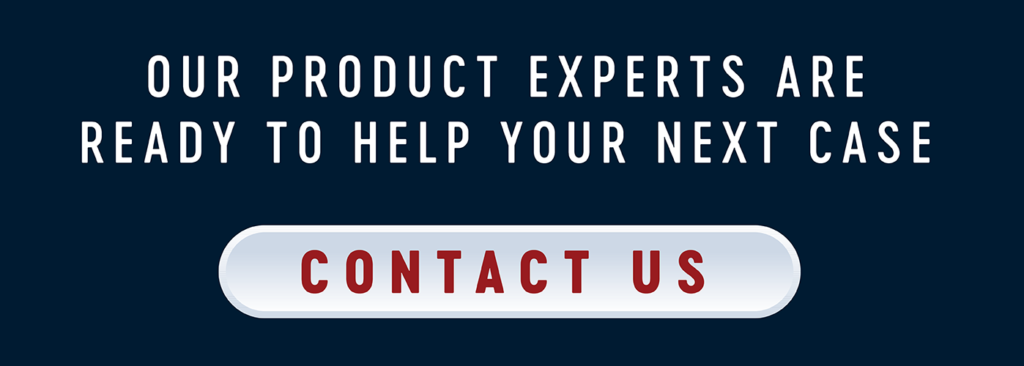Going into effect late in 2015, Actuarial Guideline XLIX (AG49) was supposed to level the playing field for indexed universal life (IUL).
This piece of regulation prohibited carriers from showing outrageously high crediting rates and created a foundation for an honest comparison of products. It set up boundaries that were designed to simplify IUL and put an end to the illustration game once and for all.
But did it?
IUL products are as complex today as they’ve ever been. In four short years, that level playing field has become a battle zone, and the illustration game has become an all-out war. Finding ways to get around the boundaries set up by AG49, carriers are pulling out the big guns with illustrations that easily outperform the high rates they were once allowed. Crediting strategies are getting more and more creative; utilizing multipliers, bonuses, participation rates, and the like to illustrate effective rates well over their defined index caps.
Related: What are the Charges Deducted from Indexed Universal Life Policies?
Given these new aggressive features, the difficult question we’re left asking is whether the projections we see on paper are realistic or purely imaginary. To come to a reasonable answer, first you must understand what goes into these life insurance illustrations.
For every one of these credit-boosting features, there’s an inherent cost associated with its implementation. Added cost doesn’t necessarily mean added benefit, nor does it imply less efficiency. In an IUL, an increase in cost more accurately translates into an increased risk, and often an increase in potential reward as well.
Here’s an Example
Let’s look at Carriers A, B, and C.
In this scenario, a 45-year-old male puts $10,000 a year into an IUL for 20 years. After those 20 years, he plans to take out the maximum annual income allowable until age 100. Each carrier is going to produce a wildly different number for that income. Why? Because each product has drastically different internal costs.
Carrier A
Starting at age 66, the insured could take out a projected $26,412 assuming a crediting rate of 7.39%. While he would’ve only put in $200,000 over the life of the policy, by age 80 they would’ve taken out $396,180, and they would still be able to take out income for the next 20 years. If all goes well, that sounds like a pretty good deal.
But then you see the cost summary. By age 100, the total charges paid to the carrier out of the cash value of the policy totals $99,851 – 50% of your total premium paid would have gone to the house. That comes down to well below 1% per year, making this a fairly low-cost structure. It would seem reasonable to assume that this is a product poised to perform given that it is not heavily weighed down by internal cost.
Related: 5 Features a Life Insurance Policy Should Have
Carrier B
Given the same scenario with Carrier B, the total charges at age 100 come out to $163,355. Assuming a crediting rate of 6.90%, that would generate $39,216 of income annually from age 66 to 100.
How’s that possible? How can a lower crediting rate and a higher cost structure result in more income for the client?
It’s simple. Carrier B has a crediting strategy that utilizes underlying multipliers and bonuses that Carrier A doesn’t. The added cost that the client would pay in Carrier B’s product goes into features that drastically improve the performance of the policy.
While this may seem counterintuitive, when purchasing an IUL it often makes sense to go with a higher cost model to see a greater return on your cash value. However, that is not always the case.
Carrier C
Carrier C shows the highest income of all three products. Assuming a crediting rate of 7.10%, Carrier C projects $51,771 of income. Along with that comes a much higher cost structure. By age 100, the total charges paid would equate to $5,043,355. That’s 25 times the total premium paid into the policy and 50 times the cost associated with Carrier A’s product.
In truth, given that each of these products hits their projected crediting rate each year, they should all perform as illustrated. If that’s the case, then Carrier C would likely be the best option. But what happens if your index returns don’t match that illustrated rate? How can you tell which of these products is built for the ups and downs and which is smoke and mirrors?
Related: Two Main Issues with the Life Insurance Underwriting Process
Try reducing that crediting rate to see how it affects the illustrated income. For our purposes, reducing each carrier’s rate by 30% (showing 70% of their maximum rate) should do the trick. For Carrier A, a 30% reduction in rate takes the projected income from $26,412 to $11,556 – a 56% decrease. Carrier B, on the other hand, sees income drop 55% from $39,216 to $17,664
Not surprisingly, that same rate reduction has the greatest impact on Carrier C, decreasing the income 86% from $51,771 all the way to $7,224.
Bottom Line
Which of these products would you feel comfortable owning? Carrier A clearly has the lowest cost structure, but it also generates the least income, and a 30% rate reduction comes out to a 56% reduction in income. Carrier B has a higher associated cost, but ultimately it handled the rate reduction equally as well as Carrier A. Finally, Carrier C produced the highest income, at the greatest cost, and was also impacted the greatest by the decreased crediting rate.
If you ask me, it’s all based on your personal risk tolerance. If you can stomach the higher cost and believe the illustrated crediting rate to be fair, Carrier C just might be the pick for you. If you think current illustrated rates are a bit high, but you still want to see maximum performance, Carrier B might suit your liking. Or, if you just want a bare-bones option that you feel you can depend on, maybe Carrier A makes sense.
The good news is that this post-AG49 IUL war hasn’t resulted in bad products. What it’s produced is more complexity. If you can break down that complexity and understand the moving pieces, you’ll find that many of these products are incredibly powerful for you and your clients.
Figure out which strategy you believe in and help your clients plan for their financial future.
Keep Reading: Comprehensive Analysis & Review Program Overview

The content within this document is for informational and educational purposes only and does not constitute legal, tax or investment advice. Customers should consult a legal or tax professional regarding their own situation. This document is not an offer to purchase, sell, replace, or exchange any product. Insurance products and any related guarantees are backed by the claims-paying ability of an insurance company. Insurance policy applications are vetted through an underwriting process set forth by the issuing insurance company. Some applications may not be accepted based upon adverse underwriting results. The examples shown herein are hypothetical. Rates can and do change often. Rates may depend on your age, health, and gender. Your results will vary. Please be sure to ask your financial professional to run an illustration based on your specific information for any product that you are considering prior to purchase.

